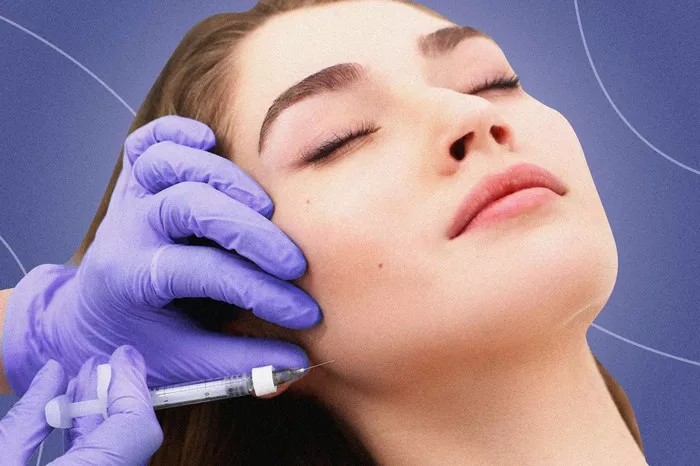Microdermabrasion is a popular non-invasive cosmetic procedure designed to rejuvenate the skin by exfoliating the outermost layer, revealing a smoother and more youthful complexion. Many individuals considering microdermabrasion may wonder about the ideal duration of a session and what factors can influence it. As a Google SEO operation expert, I’m here to provide you with a comprehensive guide on how long a microdermabrasion session should typically last, what you can expect during the procedure, and the factors that may affect its duration.
Understanding Microdermabrasion
Microdermabrasion is a minimally invasive skin exfoliation technique that uses a specialized device to remove the topmost layer of dead skin cells. This process encourages the growth of new, healthier skin cells and stimulates collagen production, resulting in improved skin texture and appearance. Microdermabrasion is known for its effectiveness in addressing various skin concerns, including:
Fine lines and wrinkles
Hyperpigmentation and age spots
Acne and acne scars
Enlarged pores
Uneven skin tone and texture
Dull or rough skin
The procedure is typically performed on the face but can also be used on other areas of the body, such as the neck, chest, hands, and back.
Duration of a Microdermabrasion Session
The duration of a microdermabrasion session can vary depending on several factors, including the specific technique used, the area being treated, and the individual’s skin condition. However, on average, a single microdermabrasion session typically lasts about 30 to 45 minutes.
What Happens During a Microdermabrasion Session?
Here’s a step-by-step overview of what you can expect during a typical microdermabrasion session:
Consultation: Before the procedure begins, you will have a consultation with a licensed skincare professional or dermatologist. During this consultation, you can discuss your skincare goals and any concerns you may have.
Cleansing: The treatment area will be thoroughly cleansed to remove makeup, dirt, and oil from the skin’s surface.
The Procedure: The skincare professional will use a handheld microdermabrasion device that emits fine abrasive particles, such as aluminum oxide crystals or diamond-tipped wands, to gently exfoliate the skin. The device is moved across the treatment area in precise patterns, targeting the outermost layer of skin.
Suction: Simultaneously, the device uses suction to remove the exfoliated skin cells and debris, promoting blood flow and stimulating collagen production.
Hydration: In some cases, a hydrating serum or moisturizer may be applied to the skin immediately following the microdermabrasion treatment to soothe and nourish the freshly exfoliated skin.
Sunscreen: A broad-spectrum sunscreen with a high SPF is typically applied to protect the treated skin from sun exposure, as it can be more sensitive after the procedure.
Factors Influencing Session Duration
Several factors can influence how long a microdermabrasion session lasts:
Area of Treatment: The size of the treatment area can impact the duration of the session. Treating a larger area, such as the back or chest, may require more time compared to a facial treatment.
Skin Condition: The severity of the skin condition being addressed can affect the session length. Individuals with more significant concerns, such as deep wrinkles or extensive sun damage, may require longer sessions or multiple treatments.
Device and Technique: Different microdermabrasion devices and techniques are available, and some may work more efficiently than others. The specific equipment used by the skincare professional can influence the treatment time.
Professional Experience: The experience and skill of the skincare professional performing the procedure can impact both the effectiveness and efficiency of the treatment.
Additional Procedures: Some individuals may choose to combine microdermabrasion with other skincare procedures, such as chemical peels or facial masks, which can extend the overall session duration.
Benefits of Microdermabrasion
Microdermabrasion offers several benefits, including:
Improved Skin Texture: Microdermabrasion can make the skin smoother and softer by exfoliating dead skin cells.
Enhanced Skin Radiance: The procedure can promote a more radiant complexion by removing dull, damaged skin.
Reduced Fine Lines and Wrinkles: Microdermabrasion can help minimize the appearance of fine lines and wrinkles.
Even Skin Tone: It can help reduce hyperpigmentation and create a more even skin tone.
Pore Size Reduction: Microdermabrasion can make pores appear smaller and less noticeable.
Non-Invasive: It is a non-invasive and relatively painless procedure with minimal downtime.
Conclusion
Microdermabrasion is an effective skincare procedure designed to improve skin texture, tone, and overall appearance. While the duration of a microdermabrasion session typically ranges from 30 to 45 minutes, it can vary based on factors such as the area of treatment, skin condition, technique, and professional experience. A licensed skincare professional or dermatologist can provide a personalized treatment plan to address your specific skincare goals and concerns.
Please note that the information provided in this article is for educational purposes and does not replace the advice of a qualified skincare professional. Always consult with a licensed practitioner for personalized recommendations and guidance regarding microdermabrasion and other skincare procedures.


